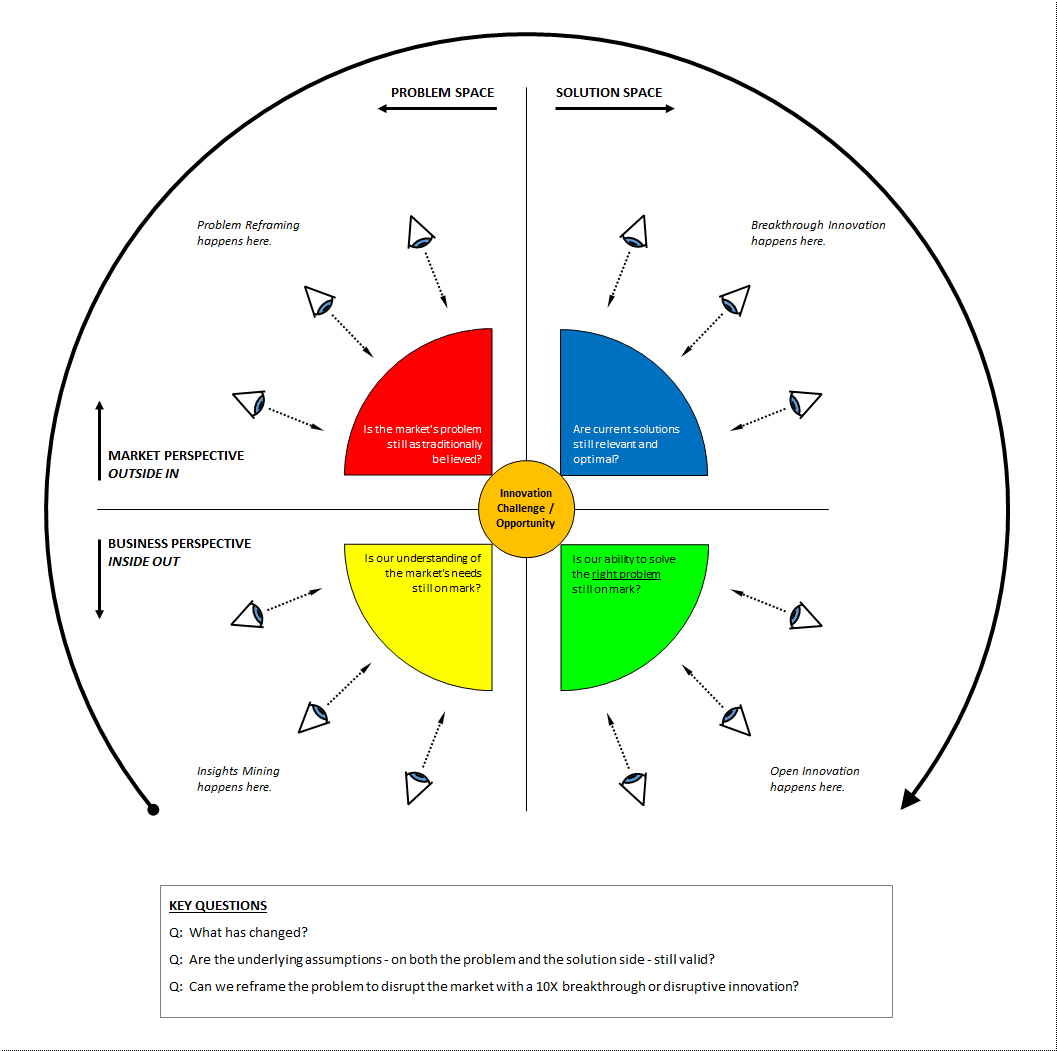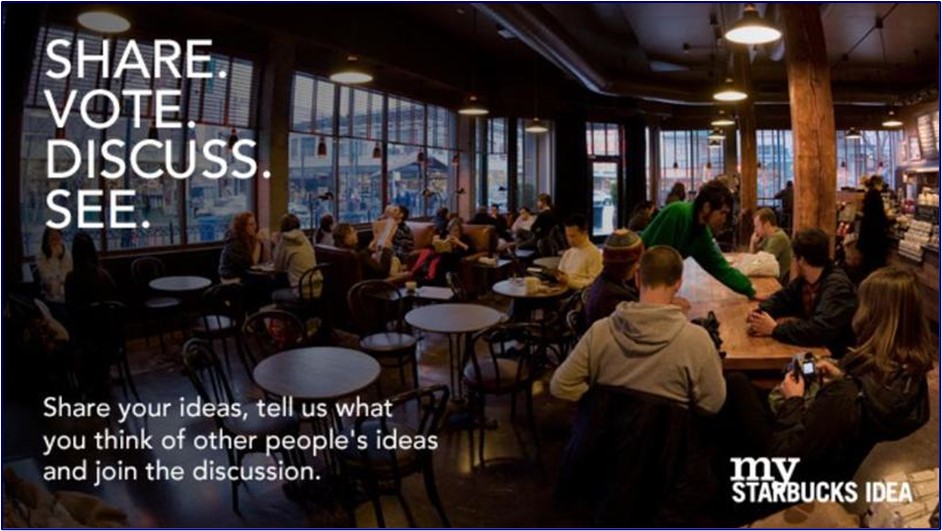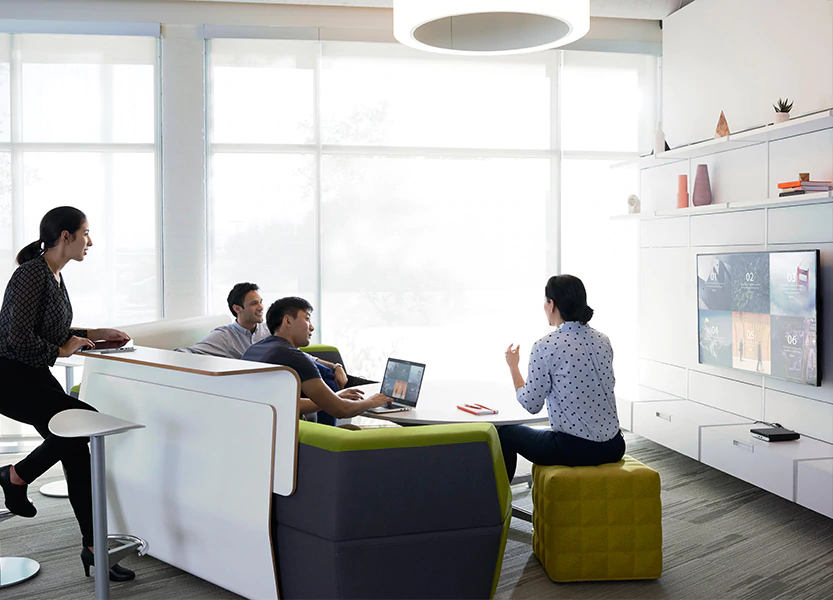The Flight Board Innovation Method (FB/IM) is Legacy Innovation Group's proprietary method for generating and proving out new innovation ideas.
FB/IM incorporates key concepts from both Discovery–Driven Innovation (DDI) and Outcome–Driven Innovation (ODI).
Like an airport's flight board, this methodology provides insights into departures and arrivals. In this case however, the departure we are seeking is a departure away from an existing means of delivering value (or the absence of a means), while the arrival we are seeking is an arrival at new means of delivering more value or a better experience. This relies upon divergent and convergent thinking processes to arrive at these new places.
The Flight Board Innovation Method is structured as a six–step process focused on context, discovery, examination, synthesis, incubation, and realization. Its first three steps belong to the Front End of Innovation, its fourth step the Mid Zone of Innovation, and its final two steps the Back End of Innovation.
Step 1 of FB/IM establishes the business context and frames the challenge to be addressed. Step 2 produces the critical insights that are foundational to executing the remainder of the process. This step is further divided into five sub–steps, which are generally executed in parallel. Otherwise their order is dictated by the needs of the organization. Step 2 also represents what should be ongoing monitoring and review activities. Step 3 is the core process of deconstruction and preliminary reconstruction, while Step 4 is a process of more detailed synthesis. Step 5 is concerned with offline concept incubation while Step 6 is about realization, or movement toward commercialization.
FB/IM allows us to lead clients through a process for discovering relevant new innovation opportunities in their business. It also provides the training tools we need to teach clients the principals and practices of business innovation. We have developed specific methods for carrying out FB/IM to ensure it is used effectively across all of our clients. Much of this happens with teams in workshop settings. Specifically, Step 1 typically happens in a half–day think–tank, while some of the work of Step 2 is carried out ahead of time outside of the workshops, such that during the workshops we are focused only on unpacking the findings and examining them to uncover their insights. Steps 3 and 4 take place in intense deep–dive workshops or extended working sessions. Steps 5 and 6 are executed over extended periods of time using the company's formal development processes.

Step 1 is to establish a context by defining the business objective of concern. This provides a sense of direction that allows participants to understand what it is they are attempting to accomplish. All subsequent activities will be framed within this context.
For example, are they being asked to conceive a new business, a new brand, a new product, a new technology, a new process, a new sales channel, or what? Or perhaps even that is unknown. Perhaps they are simply being asked how to better connect with their markets... how to deliver more value and from that grow more revenue. Similarly – how broad is their scope? Are they free to propose new ideas that will completely cannibalize other business, or are there constraints within which they are to work?
By placing a clear point of focus at the center of the effort, and desired boundaries around its perimeter, participants are able to properly channel their thoughts at solving the correct business challenge. That being said, this business challenge should be stated in the broadest possible of terms. To the extent possible, it should only be about the value that is to be delivered, and not how that value is to be delivered. In other words, it must be descriptive of a need, NOT prescriptive of a method. It must avoid over–constraining the pool of potential solutions.
This context should tie in with the organization's broader growth and innovation strategies. It should also tie in with any related market and brand strategies it is to be associated with.
Step 2 seeks to mine deep insights into what is happening in both the greater world around us and inside the business – both in their current states and – of particular interest – in their anticipated future states. Thus it is a form of environmental scanning. This work is divided into four subsets, each reflecting one of the four environments of concern: M Discovery (Markets), U Discovery (Users), B Discovery (Business), and T Discovery (Technology).
Market Discovery Activity – Characterization of the Market Environment & Evolution (Assessment & Visioning): 1 – 10 years on.
Step 2A is an exploration of the current market environment and its expected evolution over a select period of time... typically anywhere from 1 to 10 years hence. This evolution is based on trends as they are currently observed, plus how other, broader trends are expected to influence those trends over this period of time (which may, in fact, shift, accelerate, or decelerate certain of the trends). This is a "telescope" activity.
Some of the market factors we consider include:
In this exercise, we unpack and explore these market factors in adequate detail to develop a believable picture of the evolving market. If need be, multiple scenarios can be developed and given consideration when it is felt that each has a (near) equally high probability of manifesting.
The important question we are seeking to answer here is – both now and for the coming market – what really matters in terms of the value that must be delivered to constantly secure our right to win in this market... i.e. what is really most important to the market and actionable for our business? This further sets the context for the oblique examination that is to follow later on in Step 6.
User Discovery Activity – Characterization of The User Space (Assessment & Visioning): Now – 10 years on.
Step 2B is a deep exploration of the user space, with the aim of trying to unearth the deep, underlying, and fundamentally human needs and motivations that have heretofore gone unmet or even unarticulated, and which – given persistent technology and process deficiencies – may continue to go unmet for some time. This is a "microscope" activity whose work derives from User Research and its many related Design Methods.
Based on what is known of markets and technologies (see M Discovery & T Discovery), it can be reasonably assumed that user needs will continue to evolve over the time period of interest. Thus the challenge here is to plot the trajectory of how these user needs are expected to change and evolve over that time, and how the solution space may potentially fail to continue to satisfy these changing needs. Very often the foundational values and beliefs that underpin users' needs and motivations will not change markedly from one year to the next, but what will change is the environment into which they are thrust, and that will tend to change the needs and motivations that are evoked as a result.
Some of the user considerations we examine include:
In this exercise, we unpack and explore these user considerations in adequate detail to develop a believable picture of the evolving user space. If need be, multiple user scenarios can be developed and given consideration when it is felt that they each have a (near) equally high probability of manifesting.
The important question we are seeking to answer here is – for both the current and the future user space – what really matters in terms of the value that needs to be delivered and the "jobs" that need to be done... i.e. what is really important to today's and tomorrow's users? This further sets the context for the oblique examination that is to follow later on in Step 6.
Business Discovery Activity – Characterization of Your Business State & Its Evolution (Assessment & Visioning): 1 – 10 years on.
Step 2C is an exploration of your organization's current business state and how that is expected to evolve over a select period of time... generally over the ensuing 1 to 10 years. This includes your strengths, weaknesses, challenges, barriers, opportunities, and threats as they are currently understood, as well as how you expect these to shift and change over this period of time.
Some of the business factors we consider include:
In this exercise, we unpack and explore the internal workings of your business, including, most importantly, the current struggles and challenges it finds itself dealing with. We consider how prevailing trends in the external environment might impact these one way or the other... either ameliorating them or exacerbating them. As needed, multiple scenarios can be evaluated to understand their potential impact on your business' operational trajectory.
The important question we are seeking to answer here is what are the internal challenges and struggles your business needs to solve as it looks at the other facets of the opportunity space around it. Are there ways to tackle these concurrently with innovations that solve both external problems in your markets and internal problems in your business. This work helps to set the stage for the oblique examination that is to follow.
Technology Discovery Activity – Characterization of the Technology Environment & Evolution (Assessment & Visioning): 1 – 10 years on.
Step 2D is an exploration of the current technology space and its expected evolution over a select period of time... typically anywhere from 1 to 10 years hence. This evolution is based on technology trends as they are currently observed, plus how other, related technology trends are expected to influence the overall technology space over that period of time (these may shift, accelerate, or decelerate certain trends).
Some of the technology factors we consider include:
In this exercise, we unpack and explore the applicable technology space in adequate detail to develop a believable picture of the evolving technologies – and how they might possibly be combined in new ways to create new forms of value. As with market trends, multiple scenarios can be set up and given equal consideration if it is felt that they each have (near) equally high probability of occurring.
The important question we are seeking to answer here is – with both current and expected technologies – what will be possible in terms of the technological capability we will be able to deliver, as they relate to the "jobs" that will need to be done. Or, put more simply... what new forms of value will be possible? This too sets the context for the oblique examination that is to follow in the next step.
It is important to understand that what is meant by "technology" here is not just "product technology", but also "business technology". In this sense, "technology" is a much broader concept that includes new and/or different business models, processes, and methods. This is particularly relevant with service offerings, where "technology" exists in the form of "methods" and "processes". Often, the greatest leaps in value occur when we combine new business models, new product technologies, and new service methods all into something new, creating entirely new value propositions that sometimes flip categories on their head.
Discovery Integration – Synthesizing the Characterization of the Four Environments: 1 – 10 years on.
Step 2E is the all–important integration of the four prior exploration spaces. It is at this intersection of Market, User, Business, and Technology trajectories that each business will find its most fertile hunting grounds... those scenarios offering the greatest potential for the organization. The business' innovators should work from this common space in order to point their efforts toward specific areas of promise.
Even with this clarified and narrowed zone of focus, one will still find that there are scores of possible market / user / business / technology combinations that each carry their own particular risk / reward profile. Certain of these will have to be selected as the key scenarios of focus so that subsequent work can proceed. This choice will often be based on judgment as to what will work best for the business and its markets.
Step 3 represents the heart of the innovation process. In the case of existing business models and offerings, it is about completely deconstructing the current business model or offering, carefully examining and testing the assumptions underlying each and every aspect of it, and then reconstructing these in entirely new ways based on fresh, new insights into how value and experiences can best be delivered for current and emerging markets. In the case of breaking entirely new ground, it is about imagining many new possible business models and offerings, and subjecting each one to this same evaluative and constructive process.
Oblique examination is a direct application of appreciative inquiry – a process of critical questioning and examination – to your business model and its supporting ecosystems and infrastructures. As the name implies, we look at the value–delivery space from multiple oblique angles (points of view) rather than from a direct point of view, given that the direct point of view often blinds us to what is missing, whereas oblique points of view often open our eyes to see what is missing. The act of oblique examination requires participants to depart... to step outside of the existing modes of looking at the value–deficit space (divergent thinking), and arrive... contemplate entirely new paradigms of value–delivery (convergent thinking). The process ultimately holds the key to unlocking the much sought–after "a-ha's" that are at the core of innovation. It is called oblique examination because we are looking at things from entirely new perspectives... from oblique points of view, rather than from direct points of view. And we step through each piece of the business model or offering and test them individually for new opportunities.
Thus right up front, oblique examination mandates that we reject all prevailing orthodoxies and assumptions about what markets need and want (the problem space), about how these needs and wants can best be satisfied (the solution space), and about what offerings are to be provided in order to accomplish this (the design space) — all of which represent today's "dots".
The working part of this process begins by asking one simple question... "what value and/or result is the market actually looking for?" By "value" and "result", what is meant here is an all–encompassing outcome (thus the name "outcome–driven innovation"). What problem is to be solved? What jobs are to be done? What experience is to be had? In other words, what is to be accomplished by the offering on behalf it its user (product) or recipient (service). There are often multiple types of outcome needs involved, including emotional, social, and functional needs. Each of these must be given appropriate consideration.
Properly answering this question demands that prevailing orthodoxies and assumptions not only be completely abandoned, but that they be deconstructed, carefully scrutinized, and reconstructed into something new. Thus, the second part of oblique examination involves stepping through the systematic identification of the underlying assumptions and making a careful deconstructive examination of each one, asking very pointed and probing questions about them, including most importantly, "why?" and "why not?" The process probes into as many levels of "why" as are needed until it finally arrives at a satisfactory understanding of what is the real result being sought by the market... the so–called "problem behind the problem". This is called problem reframing. Once this is satisfactorily understood, it then asks what is right and what is wrong with each of the prevailing assumptions, and why that is so. One of the key outcomes of this exercise is deconstructing the value model into its "jobs to be done". This takes the business model, product, and/or service and breaks it down into its core fundamental constituents, enabling a team to test each constituent and the assumptions around it against those "jobs".
By obliterating the assumptions which no longer hold true for the value or result to be delivered, the stage is now set for building entirely new models of value delivery. This involves asking a series of questions around "What if... ?" and "How might we... ?". When finished, this provides the actionable insights needed to define new means of value–delivery.
So as to ensure a completely 360° holistic view of the opportunity space, oblique examination is undertaken from two main perspectives — one using the customer's story, and one using the business' story. The first provides an external perspective, looking from the outside in. It asks, "what is important to the market?" The second provides an internal perspective, looking from the inside out. It asks two questions... "what is important to the business?", and "what sorts of things do the organization's resources make possible?" These two perspectives produce two different sets of challenges that must be solved for concurrently, as well as two different sets of insights that must serve to inform the final solution.
This can been seen in the depiction below, where the process of oblique examination follows a clockwise route covering four key perspectives:
Oblique examination finishes with a thoughtful consideration of how to marry T Discovery, B Discovery, U Discovery, and M Discovery in ways different from how existing technologies and methods have been applied to prior market and business needs. Many new "flight paths" can be examined for the opportunity they hold, including, most powerfully, the combination of two or more new "flight paths" for radically new value models. In this hunt for new value models, "T" provides the push, while "M", "U", and "B" provide the pull.
The final outcome of this process is the selection of several new value / experience–delivery concepts that will be explored further in Step 4.

Having used Oblique Examination to uncover the "a-ha's", in Step 4 we begin to "put some meat on the bones" of each concept selected in the prior step. In this step, the team attempts to define conceptually the new business model and/or product or service that will attack the value–deficit space in a new and different way, including any particular technologies that it may rely upon. This is an exercise in synthesizing new value models, which are referred to as "flight plans". In the initial capture of flight plans, each main concept and as many supporting details as are known at the time are captured and documented. At this point, hard details of the flight plan will not generally be developed in full.
As many unique and different flight plans as makes sense should be generated during this step. Some preliminary filtering may be done to select the most promising plans; how much depends upon the situational objectives that have been prescribed. Flight plans selected for further evaluation move onto the next step – Incubation & Selection. The remaining flight plans can be revisited at a later point if desired.
During a more extended period of time (typically on the order of 3 – 6 months), further work is undertaken to build out select flight plans captured in Step 4. This work includes a variety of research, studies, and analyses, including market research, technology research, design studies, and financial analyses, amongst others. The objective is to collect all the necessary information and build the necessary structure around each plan so as to adequately refine its business, product, or service concept and make a compelling business case for it.
For each flight plan examined in this step, the resultant findings are compiled and documented into a working straw–man business plan. This straw–man business plan is to be used in making a decision around whether or not to invest more deeply into defining brand, product, and design strategies for the concept, work that would be required to construct a detailed, formal business plan. Thus there will be a vetting event at the end of this step, based on the findings of the research. Having gone through this incubation and vetting process, each flight plan will either be selected to move into Realization or set aside for possible future consideration.
This final step – Realization – entails building a formal, detailed business plan for the concept. In order to do this, the organization will need to invest additional time and effort into defining brand, product, and design strategies at a deeper level. The resultant formal business plan is the actual tool that will then be used in making the decision to invest in full development and commercialization of the concept.
Getting from the straw–man business plan of the Incubation Step to the well–developed formal business plan of the Realization Step is greatly aided by using a structured concept–development process such as Emergent NPD™.
The Flight Board Innovation Method serves as a key tool within a number of our innovation workshops and events. To learn more, see our Workshops & Fieldwork Events page, or to learn about engaging us in this capacity, refer to our Workshops Engagement page.
Please be aware that when we use FB/IM in an innovation workshop, it is expected that some amount of Discovery work associated with Step 2 will have been completed ahead of time, thus there will be a Pre-Work assignment for each participant to complete. Similarly, while the work of Step 5 will occur outside of a workshop, its findings and conclusions can be reviewed and further explored inside of a workshop. Thus we offer a Follow-Up Workshop for this purpose.
The Flight Board Innovation Method and the Future Lens Business Model Innovation Framework (together) provide the basis for our Business Model Innovation training course. To learn more, see our Business Model Innovation Course page, or to learn about engaging us in this capacity, refer to our Training Engagement page.

CEOs come and CEOs go. Some are excellent. They generally ‘get it’. Others not so much. They really ‘don't get it’. What makes the difference between these?
READ MORE
There's an insidious debate that's bounced around for probably the better part of twenty years now. It's the debate of whether or not ‘innovation is everyone's job’...
READ MORE
Innovation Spaces – which can refer to any space intentionally designed to foster and facilitate good innovation work – come in all sorts, shapes, and sizes...
READ MOREWe partner with committed business leaders to make their organizations the driving forces in their markets.
CONTACT USSign up for our newsletter.
NEWSLETTER SIGN-UP